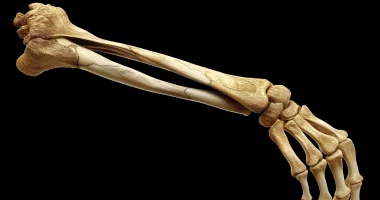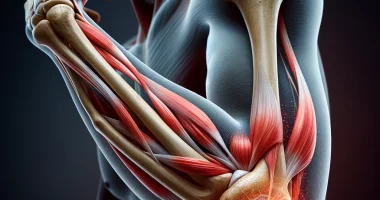Benign stomach tumor
Definition
Benign gastric tumors are a group of neoplasms of epithelial and non-epithelial origin arising from different layers of the gastric wall, characterized by slow development and relatively favorable prognosis. This may be manifested by pain in the epigastrium, symptoms of gastric bleeding, nausea, and vomiting. The main diagnostic methods are gastric radiography, fibrogastroscopy, and histological tumor tissue examination. Treatment consists of the removal of neoplasia by endoscopic method or surgery.
General information
Benign gastric tumors in modern gastroenterology account for 2-4% of the total number of all tumor neoplasms of the organ. Gastric tumors can originate from their mucous, submucous, muscular, or subserous layer and from epithelial, nervous, vascular, and fatty structures. According to the type of growth, endogastric neoplasms (growing towards the gastric lumen), exogastric (growing towards neighboring organs), and intramural (with intramural growth) are distinguished.
Reasons
The reasons for the development of benign gastric tumors have yet to be definitively clarified. According to the dysregenerative theory, the development of polyps may be associated with impaired regeneration of the gastric mucosa and discoordination of the processes of proliferation and differentiation of its cells in chronic gastritis. Gastric adenomas occur against the background of atrophic gastritis due to the reorganization of glands and cover epithelium and the appearance of intestinal metaplasia.
Hyperplastic polyps develop when cell renewal and longevity increase are impaired due to excessive regeneration of the covering and pit epithelium. It is also noted that gastric polyps often arise in areas with reduced secretion of hydrochloric acid (lower third of the stomach), in patients with hypo- and achlorhydria. The source of non-epithelial tumors can be heterotopic embryonic tissue preserved in the mucosa in violation of intrauterine development.
Classification
Depending on their origin, benign gastric neoplasms are divided into epithelial and non-epithelial. Among epithelial tumors, there are single or multiple adenomatous and hyperplastic polyps, and diffuse polyposis. Polyps are tumor-like epithelial growths in the gastric lumen with a pedicle or broad base, rounded or oval shape, smooth or granulation surface, and dense or soft consistency.
Gastric polyps most often occur in males aged 40-60, usually in the pyloric-antral region. Polyp tissues consist of overgrown gastric epithelium, glandular elements, and connective tissue rich in blood vessels. Adenomatous gastric polyps are true benign tumors of glandular epithelium consisting of papillary and/or tubular structures with marked cellular dysplasia and metaplasia.
Adenomas are dangerous in terms of malignization and often lead to the development of gastric cancer. Up to 75% of benign gastric epithelial tumors are hyperplastic (tumor-like) polyps arising from focal hyperplasia of the covering epithelium, with a relatively low risk of malignization (about 3%). In diffuse gastric polyposis, both hyperplastic and adenomatous polyps are detected.
Rarely occurring non-epithelial benign tumors are formed inside the gastric wall – in its submucosal, muscular, or subserous layer from various elements (muscle, fat, connective tissue, nerves, and vessels). These include myomas, neurinomas, fibromas, lipomas, lymphangiomas, hemangiomas, endotheliomas, and their mixed variants.
Dermoids, osteomas, chondromas, hamartomas, and heterotopias from pancreatic and duodenal gland tissues may also occur in the stomach. Non-epithelial benign neoplasia occurs more often in women and can sometimes reach significant size. It has clear contours, usually a rounded shape, and a smooth surface.
Leiomyomas, the most common benign non-epithelial tumors, may remain in the muscle layer, grow toward the serosa, or grow through the gastric mucosa, leading to ulceration and gastric bleeding. Non-epithelial gastric neoplasms are prone to malignization.
Symptoms
Half of the cases of gastric polyps proceed without clinical manifestations. Symptoms are mainly determined by the background disease (chronic gastritis) and complications (ulceration of the polyp tip, bleeding, polyp prolapse into the duodenum, and obstruction of the pylorus). Pain in gastric polyps is due to the inflammatory process in the surrounding mucosa, localized in the epigastric region, and has a dull, aching character. At first, they occur after eating, but then they become constant.
There may be complaints of bitterness in the mouth, nausea, and belching. If the pylorus obstruction develops, there is vomiting, and if the polyp is infringed, there is pain in the pancreatic region and throughout the abdomen. Polyp ulceration leads to moderate gastric bleeding, which may reveal blood in the vomit, tarry stools, malaise, pallor of the skin, and anemia. Malignization of polyps, as a rule, occurs gradually, so suspicion should cause a lack of appetite, weight loss, increasing general weakness, and dyspeptic disorders.
Clinical signs of non-epithelial tumors depend on their localization, the nature and speed of growth, and surface ulceration. Most often, non-epithelial tumors of the stomach are accompanied by short-term and constant pain, occurring on an empty stomach, after eating, or when changing position. In neurinomas, the pain syndrome is strong and burning. Tumor ulceration (especially hemangioma) can cause hidden or profuse gastric bleeding, which threatens the patient’s life.
If the tumors are large, they can be palpated through the anterior abdominal wall. Benign non-epithelial neoplasia can be complicated by peritonitis in the case of necrosis of neoplasms and acute or chronic obstruction of the pylorus in the case of tumor impingement and malignant degeneration.
Diagnosis
Diagnosis of tumors allows for data on anamnesis, radiological, and endoscopic studies. The presence of polyps on gastric radiography may be indicated by a filling defect repeating the outline of the tumor: clear, even contours, round or oval shape, mobility in the presence of a stem, or immobility—in the case of a polyp with a wide base.
In gastric polyposis, a large number of filling defects of different sizes are detected. The gastric wall’s peristalsis is preserved. Signs of lack of peristalsis, increase in size, change in shape, and vagueness of the contours of the filling defect in dynamic observation may indicate malignization of the polyp.
Diagnosis is clarified by fibrogastroduodenoscopy (FGD), which allows visual inspection of the state of the gastric mucosa and recognition and differentiation of polyps from other diseases. Visual differentiation of benign polyps from malignant polyps is difficult. Usually, a polyp larger than 2 cm, with a lumpy lobular surface and irregular ulcerated contours, may indicate malignancy. To accurately determine the nature of the polyp during FGD, a biopsy of suspicious areas is performed with a morphologic examination of biopsy specimens.
In most cases, the diagnosis of non-epithelial neoplasia can be established only after surgery and morphologic examination of the neoplasm. Clinical manifestations (e.g., bleeding) indicate the possibility of tumorigenesis. FGD is more informative in the endogastric growth of non-epithelial tumors. In intramural or exogastric neoplasms, endoscopic examination reveals gastric compression from the outside.
Radiography of the stomach in non-epithelial voluminous processes helps to detect rounded or irregular contours of the filling defect with preservation of peristalsis and folds on the submucosal layer; exogastric growth of the neoplasm with retraction of the stomach wall; ulceration with the formation of a niche at the tumor apex, etc. Ultrasound and CT of the abdomen can be used to detect exogastric tumors.
Treatment of benign gastric tumors
The pathology is treated surgically only; the method of surgical intervention depends on the type and nature of the tumor and its localization. Without reliable criteria for malignization, all detected neoplasms must be removed. The main methods of removal of benign tumors at present are minimally invasive endoscopic electroexcision (or electrocoagulation), enucleation, gastric resection, and, rarely, gastrectomy.
Endoscopic polypectomy is performed for small solitary polyps localized in different parts of the stomach: at a size of less than 0.5 cm, cauterization with a point coagulator is used, and at a size of 0.5 to 3 cm, electroexcision is used. In large single polyps on a wide base, surgical polypectomy (excision within the mucosa or with all layers of the stomach wall) with a preliminary gastrotomy and revision of the stomach is performed.
Limited or subtotal gastric resection is performed in case of multiple polyps or suspected malignization. After polypectomy and resection, there is a risk of incomplete removal, recurrence, and malignization of the tumor, possible development of postoperative complications, and functional disorders. Gastrectomy may be indicated in diffuse gastric polyposis.
During the removal of non-epithelial neoplasia, an urgent histological examination of tumor tissues is performed. Small neoplasms growing in the direction of the gastric lumen are removed endoscopically; encapsulated tumors are excised by enucleation. Large, challenging-to-access endo- and exogastric neoplasia are removed by wedge or partial resection; if malignization is suspected, resection complies with oncological principles. After surgery, dynamic monitoring by a gastroenterologist with mandatory endoscopic and radiologic control is indicated.
All these treatment options are available in more than 770 hospitals worldwide (https://doctor.global/results/diseases/benign-stomach-tumor). For example, Distal gastric resection can be performed in 22 clinics across Turkey for an approximate price of $4.8 K (https://doctor.global/results/asia/turkey/all-cities/all-specializations/procedures/distal-gastric-resection).

